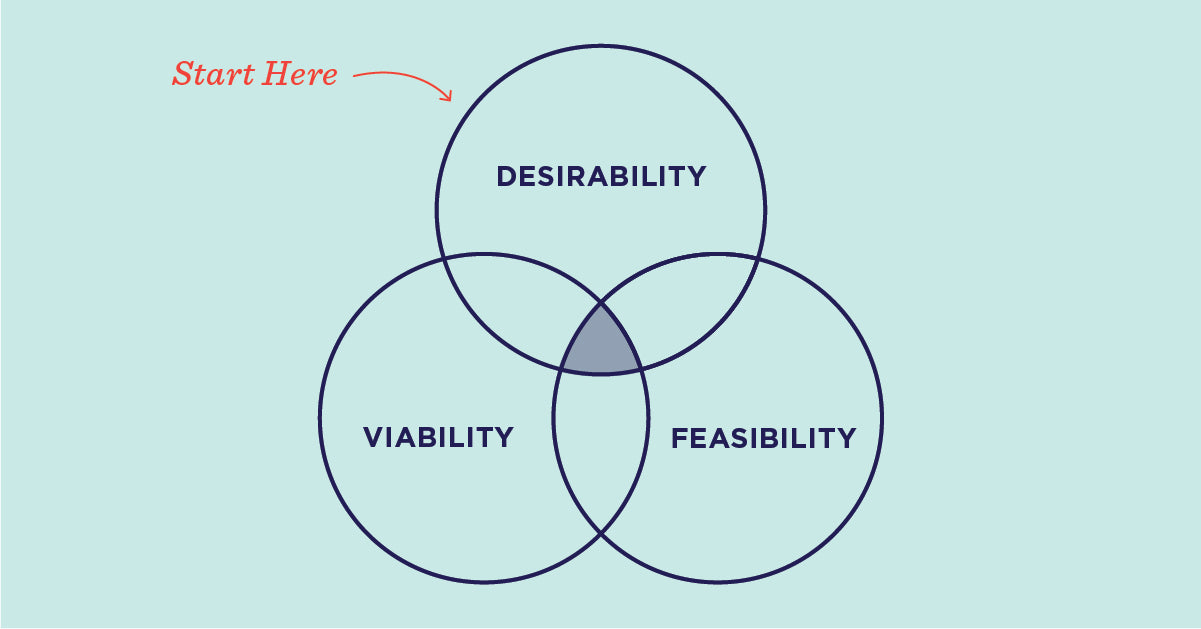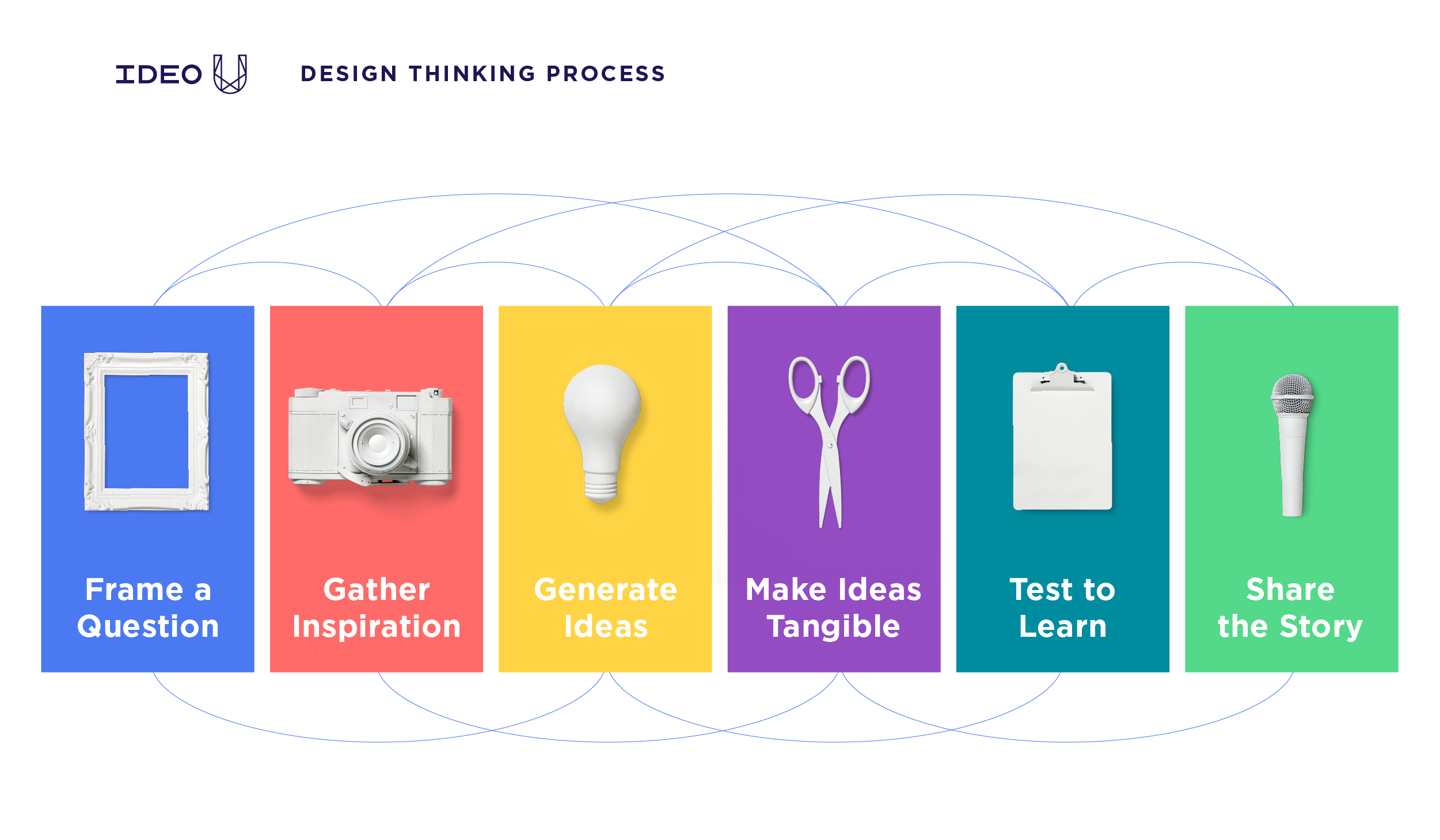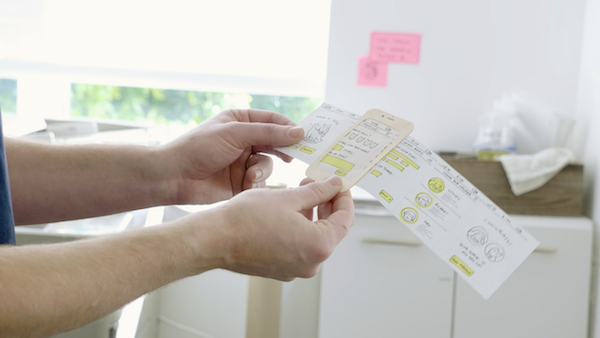What is Design Thinking & Why Is It Beneficial?

In today’s fast-paced business environment, innovation is key to staying competitive. Design thinking offers a powerful methodology for business leaders to develop impactful products, services, and processes.
By focusing on human needs, design thinking ensures that solutions are technologically feasible, economically viable, and deeply relevant to the people they serve. Dive in to learn how this human-centered approach can help you lead your organization toward greater innovation and success.
How Might We Define Design Thinking?
Design thinking has a human-centered core. It encourages organizations to focus on the people they're creating for, which leads to better products, services, and processes. When you sit down to create a solution for a business need, the first question should always be what's the human need behind it?
How Does Design Thinking Work?
By employing design thinking, we pull together what’s desirable from a human point of view with what is technologically feasible and economically viable. It also allows those who aren't trained as designers to use creative techniques, methods, and mindsets to address a vast range of challenges.

- Desirability: What makes sense to people and for people?
- Feasibility: What is technically possible within the foreseeable future
- Viability: What is likely to become part of a sustainable business model?
The design thinking process starts with taking action and understanding the right questions. It’s about embracing simple mindset shifts and tackling problems from a new direction.
How Can Design Thinking Help Your Organization?
- Understand the unmet needs of the people you’re creating for (customers, clients, students, users, etc...).
- Reduce the risk associated with launching new ideas, products, and services.
- Generate solutions that are revolutionary, not just incremental.
- Learn and iterate faster.
- Collaborate better and tap into the creative potential of individuals and teams
Which Industries Require Design Thinking Skills?
Design thinking is applicable no matter your role or industry. Whether you work in business, government, education, or nonprofit, design thinking can help you develop innovative solutions based on the needs of your customers. See case studies showcasing the impact of design thinking across a variety of industries and practices.
What are the Phases of Design Thinking?

The We teach the phases of design thinking as linear steps, but in practice the design thinking process is not always linear. Some of these steps may happen several times, and you may even jump back and forth between them. Moving through the phases of design thinking can take you from a blank slate to a new, innovative solution.
Frame a Question—Identify a driving question that inspires others to search for creative solutions.
Gather Inspiration—Inspire new thinking by discovering what people really need.
Generate Ideas—Push past obvious solutions to get to breakthrough ideas.
Make Ideas Tangible—Build rough prototypes to learn how to make ideas better.
Test to Learn—Refine ideas by gathering feedback and experimenting forward.
Share the Story—Craft a human story to inspire others toward action.
When done right, design thinking will help you understand the mindsets and needs of the people you're creating for, surface opportunities based on these needs, and lead you to innovative new solutions starting with quick, low-fidelity experiments that provide learning and gradually increase in fidelity.
4 Ways to Get Started with Design Thinking
1. Gather Insights by Practicing Empathy, Observation, and Interviewing
Getting to know your customers is the first step toward creating products and services they want and need. Don’t assume you know what someone thinks or feels. Gathering information about your target consumer is a critical piece of the design thinking approach. Build your interview skills with these tips.
2. Build Scrappy Prototypes to Learn About Unmet Needs
You don’t need lots of time or resources to prototype. Begin with pen and paper or other accessible resources, like a slide deck, to mock up ideas and get feedback that will help you better understand the needs of your customers before investing in production.
At IDEO, we worked with a large media firm undergoing a big reorganization. The team prototyped possible changes to the organizational structure by using constraints to create 6-week experimental teams. The goal was not for the teams to succeed necessarily, but for the company to gain some learnings that could inform a better structure.

3. Turn Problems into Questions
When presented with a problem, resist the urge to find a solution right away. Shift your mindset to instead ask a question that might get you closer to the root of the challenge or support an incremental improvement.
Take the example of an IDEO team who was working with a company struggling with retention. Instead of focusing on improving retention rates, they asked, How can we make a better employee experience? By refocusing on the real human needs, they uncovered insights that were better able to drive toward a solution.
4. Use Research to Understand the Past, Present, and Future
IDEO typically uses lots of different research techniques to generate insights around the needs of people including, but not limited to, observation, interviewing, immersive empathy, and exploring extreme users.
Generally, the type of research you can do falls into three buckets:
- Generative Research: Used to identify new opportunities and explore needs.
- Evaluative Research: Used to gather feedback on experiments and help you iterate forward.
- Validating Research: Traditional market research intended to help you understand what is currently happening.
Generative and evaluative research are focused on the future and new ideas, while validating research is centered around what is occurring in the present. Balance your research approach to focus on what’s happening now and what could be in the future.
Design Thinking Tools and Resources
To get started with design thinking, business leaders and managers can leverage various design thinking tools and resources, such as:
- IDEO U’s Courses and Workshops: Practical design thinking courses that teach essential design thinking skills and mindsets. Here are a few of our recommendations:
- Foundations in Design Thinking Certificate
- Human-Centered Service Design Course
- Storytelling for Influence Course
- Empathy Maps and Journey Maps: Use tools such as a journey map to better understand customer needs and experiences.
Design Thinking FAQs
To learn more about design thinking, check out our Design Thinking Overview page and Design Thinking Resources page.
Skip ahead in the episode for answers to these questions:
(04:31): How do you convey what design thinking is to non-designers?
(08:41): How would you describe design thinking's business value?
(13:57): How can we do virtual design thinking exercises?
(17:50): What are some tips for idea generation and synthesis with large groups?
(22:28): How do you introduce design thinking to an organization that's never used it before?
(25:23): How can we engage stakeholders and sponsors early on in the design of a change management approach?
(29:34): What are the biggest mistakes you see companies make when trying to implement design thinking?
(32:32): What if leadership is not interested in the process of design thinking?
(33:09): In which industries is it more difficult to apply design thinking?
(34:05): What are the best practices for framing the right question?
(35:56): How do you create a good design thinking project brief?
(38:06): How do you use design thinking with auditors or assessors or other fairly linear contexts?
(40:39): How do I get my start in design thinking?
Unlock the Power of Design Thinking in Your Business
Ready to transform your organization and drive innovation through design thinking? Start by fostering a human-centered culture, leveraging real-world success stories, and integrating this powerful methodology with your existing processes.
Enroll in our Foundations in Design Thinking Certificate Course to gain practical skills and insights that will help you lead your team to success. Take the first step today and unlock the full potential of design thinking in your business.
- choosing a selection results in a full page refresh
- press the space key then arrow keys to make a selection



